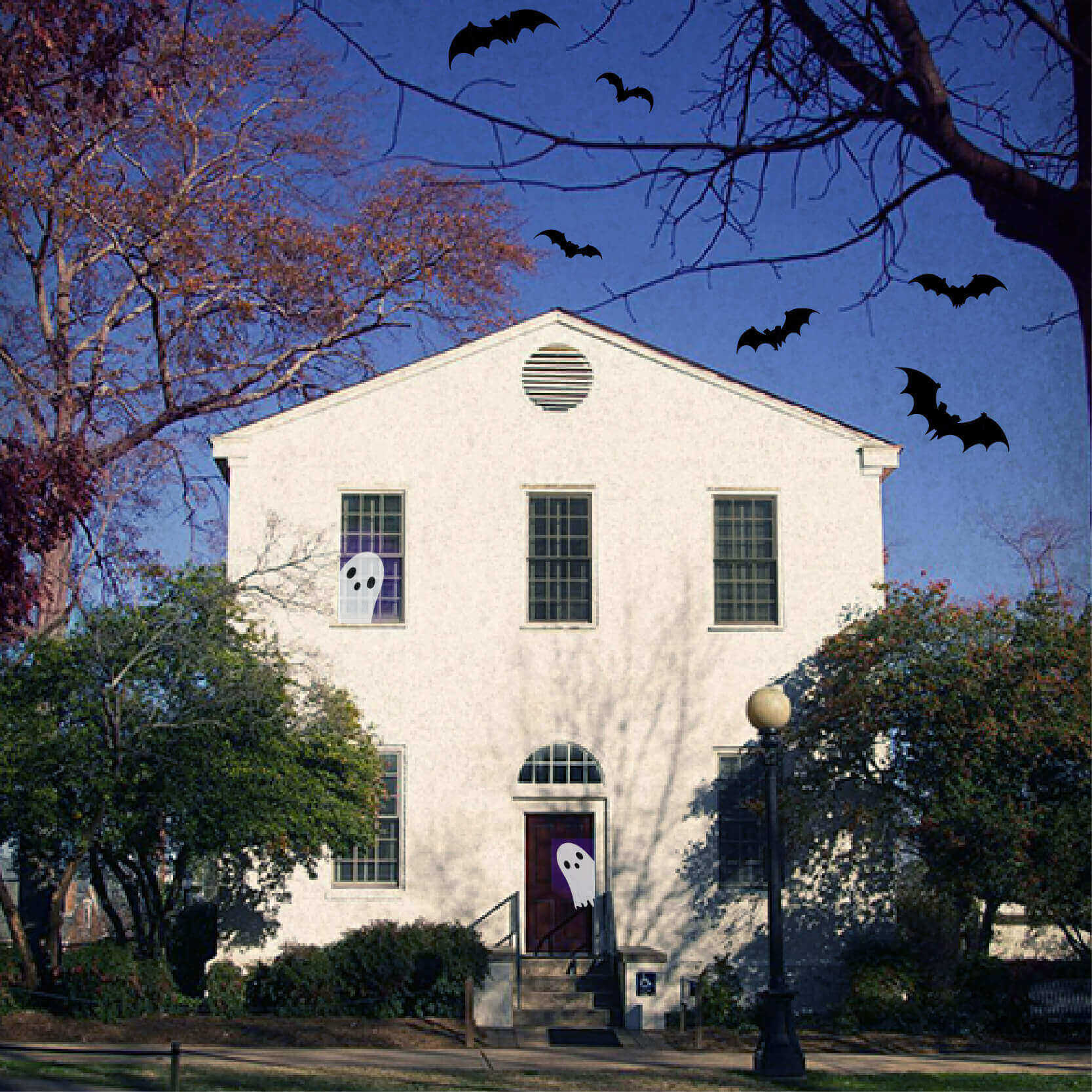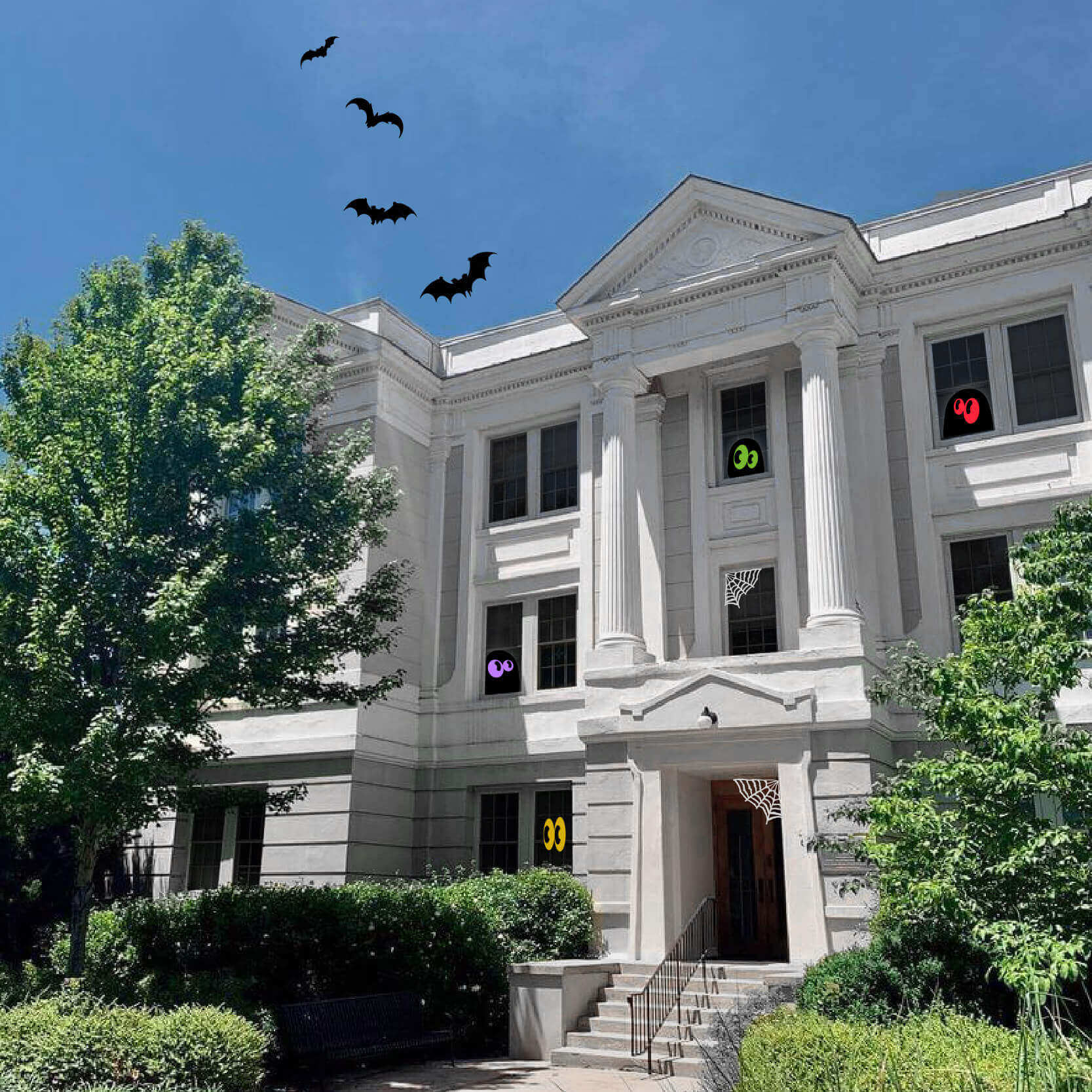Haunted UGA: Spooky stories from around campus
Content warning: The following post includes references to murder, suicide and of course–ghosts!
The University of Georgia may be known for exceptional school spirit, but did you know that campus is also home to spirits of the supernatural kind? Ghost sightings have been reported around campus practically since the university’s founding, from tales of eerie moans and creaks to full-blown apparitions.
Many of the university’s most well-known ghost stories are based on historic North Campus, where the university’s first buildings were constructed during the 19th century. In those Greek revival buildings shaded by mighty ancient oak trees, some of UGA’s spookiest tales of terror and tragedy unfolded years ago and continue to frighten visitors today.
The Waddel Hall Haunting

Waddel Hall, an unassuming white brick building on the main library quad, is the second-oldest building on the UGA campus and currently houses the university’s Office of Special Events. The building has served many purposes since it was completed in 1821, including as a dormitory, boarding house, gymnasium, snack bar and scientific equipment storage.
In 1918, however, a grisly crime occurred within the building’s four walls that changed its legacy forever. A young soldier returned home from World War I to find his girlfriend had fallen for another man. His friends loaned the couple their room in Waddel Hall so he could try to save the relationship, but sometime in the early morning, gunshots rang out–the soldier had shot his former love and then himself.
According to the Red and Black, visitors to Waddel Hall over the years report unexplainable sounds and eerie lights coming from the second floor of the building. Could it be the former lovers returning to continue their quarrel?
Joe Brown Hall’s Staircase to Nowhere

Joe Brown Hall, originally built in 1932 to serve as a men’s dormitory and later converted to an academic building, is known by students for its disorienting winding staircases and narrow hallways. Adding to the confusion is one particular staircase, which seemingly leads to nowhere–those who climb it reach nothing but a solid wall decorated with a photo of a hallway.
The reason for this bizarre architectural feature has been investigated by popular paranormal shows and reported in the Red and Black. In the early 1970s, when the building was still a dormitory, a student mysteriously died in his dorm room over the Thanksgiving break.
After janitors discovered the body, the entrance to the room at the top of the stairs was bricked over completely. Those who pass by the staircase today claim that the space has an eerie and unsettling aura, experiencing temperature fluctuations and other oddities.
The Terrifying Toombs Oak

Between Demosthenian Hall and the UGA Chapel, a sundial marks the former location of the Toombs Oak tree. Robert Toombs, a famous UGA alumnus from the 19th century who served as a lawyer and congressman, is said to haunt Demosthenian Hall via a portion of the tree stump kept on the building’s first floor, according to an article from the Red and Black.
The legend goes that Toombs was voted as class speaker but expelled for his gambling habit before he could give his speech at commencement. A skilled orator and member of the Demosthenian Literary Society, Toombs gave a rousing speech anyway under the oak tree outside the chapel while the legitimate commencement address happened inside. Years later, it’s said that lightning struck the tree at the moment of his death.
Members of the Demosthenian Literary Society have claimed to have encountered the ghost of Toombs over the years through pacing noises and apparitions on the second floor. One student who fell asleep in the building late at night awoke to a specter of Toombs laughing menacingly at her from across the room.
The Candler Hall Poltergeist

Candler Hall, the home of the School of Public and International Affairs, was originally built to serve as a dormitory. In 1905, a student named Willie Lloyd died in his dorm room after accidentally shooting himself while absentmindedly spinning his pistol around his finger. The university’s chancellor at the time, Walter Hill, and a group of students escorted his remains to his family’s burial plot in Atlanta–but there are signs that his spirit never left Candler Hall.
During the building’s dormitory days, students reported waking suddenly at night to the feeling of someone hovering over them. Faculty have reported hearing unusual noises, as if someone is pacing on the wood floors. The building’s elevator and automatic doors have been known to open and close by themselves, and some claim to have seen ghostly apparitions in the staircases.
One faculty member even felt someone tap her shoulder as she walked through the first-floor lobby. When she turned to see who it was, she discovered the lobby was empty–and then felt another tap as she left the building.
Are all of these mysterious occurrences the work of the restless spirit of Willie Lloyd? Or have more than one of the building’s former residents returned to occupy the building in the afterlife?
These stories may be spooky, but they are a reflection of UGA’s history as the country’s first public institution of higher education. For centuries, this campus has been a place where students’ stories unfold. Sometimes, these tales leave behind an eerie legacy, but often, they are uplifting stories of growth, service and self-discovery. What’s your UGA story?






